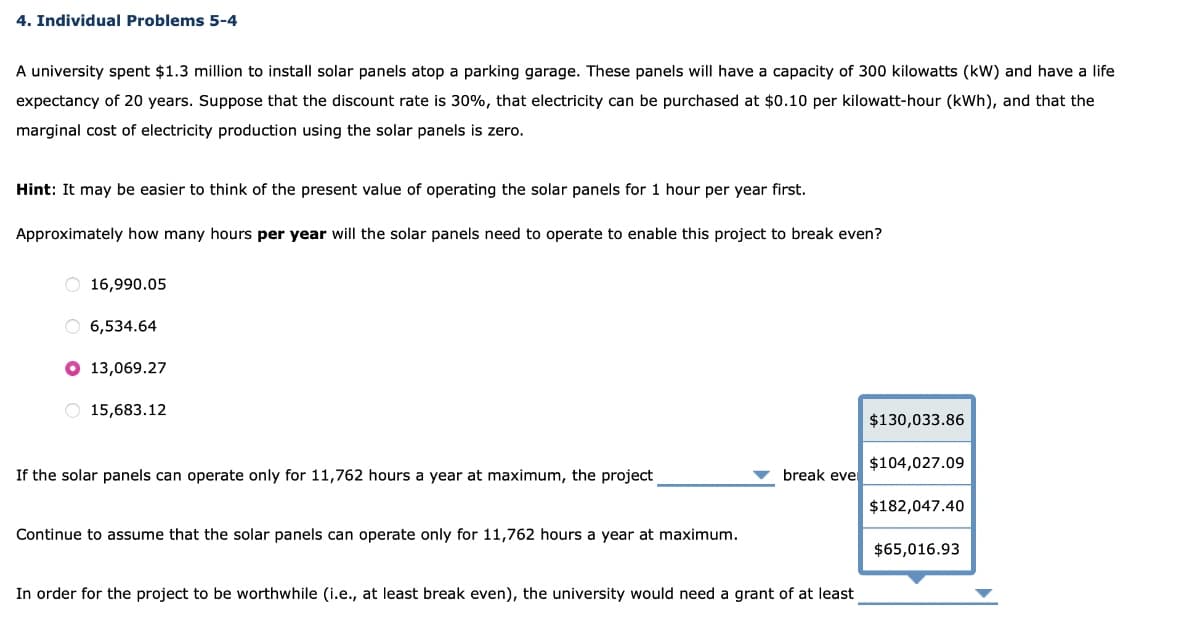A university spent $1.3 million to install solar panels atop a parking garage. These panels will have a capacity of 300 kilowatts (kW) and have a life expectancy of 20 years. Suppose that the discount rate is 30%, that electricity can be purchased at $0.10 per kilowatt-hour (kWh), and that the marginal cost of electricity production using the solar panels is zero. Hint: It may be easier to think of the present value of operating the solar panels for 1 hour per year first. Approximately how many hours per year will the solar panels need to operate to enable this project to break even? 16,990.05 6,534.64 O 13,069.27
A university spent $1.3 million to install solar panels atop a parking garage. These panels will have a capacity of 300 kilowatts (kW) and have a life expectancy of 20 years. Suppose that the discount rate is 30%, that electricity can be purchased at $0.10 per kilowatt-hour (kWh), and that the marginal cost of electricity production using the solar panels is zero. Hint: It may be easier to think of the present value of operating the solar panels for 1 hour per year first. Approximately how many hours per year will the solar panels need to operate to enable this project to break even? 16,990.05 6,534.64 O 13,069.27
Chapter10: Project Cash Flows And Risk
Section: Chapter Questions
Problem 13PROB
Related questions
Question

Transcribed Image Text:4. Individual Problems 5-4
A university spent $1.3 million to install solar panels atop a parking garage. These panels will have a capacity of 300 kilowatts (kW) and have a life
expectancy of 20 years. Suppose that the discount rate is 30%, that electricity can be purchased at $0.10 per kilowatt-hour (kWh), and that the
marginal cost of electricity production using the solar panels is zero.
Hint: It may be easier to think of the present value of operating the solar panels for 1 hour per year first.
Approximately how many hours per year will the solar panels need to operate to enable this project to break even?
O 16,990.05
O 6,534.64
O 13,069.27
O 15,683.12
$130,033.86
$104,027.09
If the solar panels can operate only for 11,762 hours a year at maximum, the project
break eve
$182,047.40
Continue to assume that the solar panels can operate only for 11,762 hours a year at maximum.
$65,016.93
In order for the project to be worthwhile (i.e., at least break even), the university would need a grant of at least
Expert Solution
This question has been solved!
Explore an expertly crafted, step-by-step solution for a thorough understanding of key concepts.
This is a popular solution!
Trending now
This is a popular solution!
Step by step
Solved in 2 steps

Knowledge Booster
Learn more about
Need a deep-dive on the concept behind this application? Look no further. Learn more about this topic, accounting and related others by exploring similar questions and additional content below.Recommended textbooks for you

